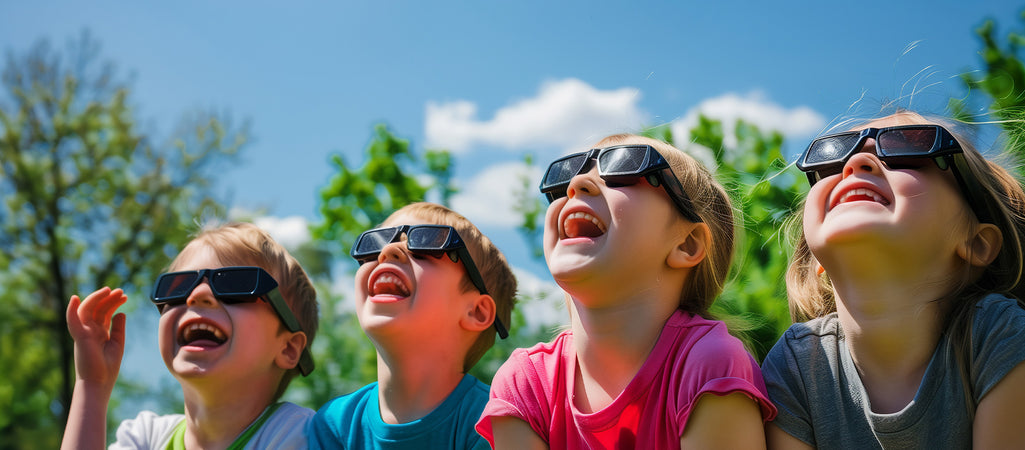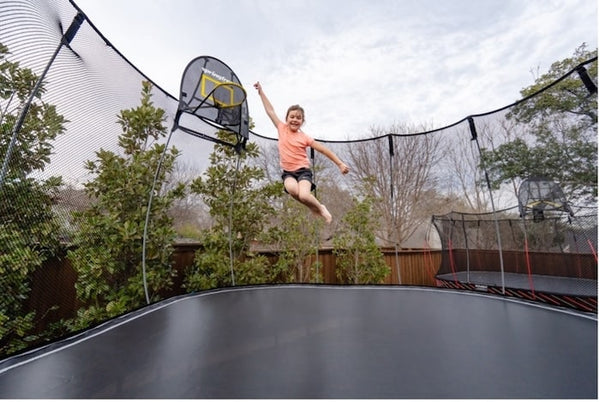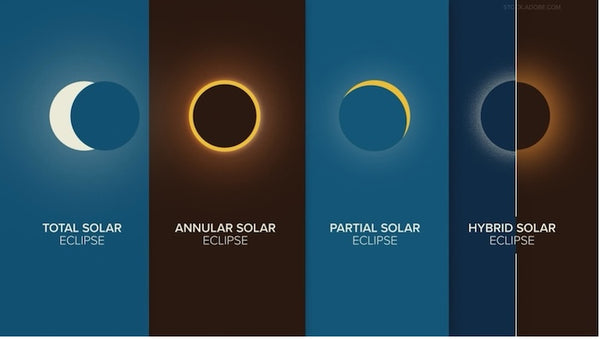7 Tips for Watching the Solar Eclipse With Springfree Trampoline
Get ready to witness the magic of the total solar eclipse from a unique vantage point – your Springfree Trampoline! Plus, fascinating eclipse facts await.
min read

On April 8, the Moon will pass between the Sun and Earth, creating a total solar eclipse that you won’t get to see for another 20 years.
Where should you take in such a historic view?
There are many options. Our favorite? From the comfort of your Springfree Trampoline!
In this article, we’re going to give you tips on how to watch the solar eclipse from your Springfree Trampoline.
We’ll also give you some super cool facts to share with your friends and family about the eclipse.
Get ready!
7 Tips for the Ultimate Springfree Eclipse Viewing Experience
What you will need: Safety glasses, pillows, blankets, water, plenty of snacks, an educational book about the eclipse and a timer.
Here are our seven tips to maximize your eclipse experience on your trampoline:
Tip #1: Invite friends or family over to watch as a group. Pets will need to stay outside the trampoline (sorry to the family dog!).
Tip #2: MAKE SURE you have enough eclipse glasses for everyone. Viewing the eclipse without glasses can cause serious eye injury.
You can look for eclipse glasses at your local schools or libraries. Many retailers like Amazon also have glasses you can buy online.
Check out NASA’s Total Solar Eclipse Safety to learn more about eye safety during the eclipse.
Tip #3: Bring your most comfortable pillows and blankets onto the trampoline. If your friends plan on staying, keep them on there after the eclipse and have a trampoline sleepover!

Springfree Trampoline.
Tip #4: Have water and plenty of snacks on hand. Maybe solar system candy, perhaps?
Tip #5: Bring books about the solar eclipse. Amazon has plenty of books on the eclipse, including coloring books, if you’re looking to buy beforehand.
Tip #6: Set a timer. The solar eclipse will happen from approximately 2:27 p.m. to 3:35 p.m. CST and you don’t want to accidentally miss it!
Tip #7: Go for a bounce afterward!

Springfree Trampoline.
11 Fun Facts About the Solar Eclipse
Here are some interesting facts to wow your family before, during and after the eclipse:
1. Solar eclipses only happen when there is a new moon.
2. They occur when the Sun, Moon and Earth line up, casting a shadow on Earth that blocks the Sun’s light.
3. There are four types of solar eclipses (total, partial, annular and hybrid). A hybrid eclipse is the rarest of them all.

Photo courtesy of News Center Maine.
4. Solar and lunar eclipses occur about every 18 years in a cycle called the Saros Cycle.
5. The oldest recorded eclipse is believed to have happened in 1223 BC.
6. Albert Einstein’s Theory of Relativity was proven during a solar eclipse in 1919.
7. Bring your jackets: A total eclipse can drop the temperature by 10 degrees!
8. Animals tend to get confused by the darkness of the eclipse. Listen for owls and crickets!
(A NASA-funded project called the Eclipse Soundscapes Project is currently studying how eclipses affect animals and insects!)
9. 15 states will see the total eclipse, with the path starting in Texas and ending in Maine.
Here is a map of the total eclipse’s path, courtesy of Scientific American:

10. Even though there is a Path of Totality Map, everyone in the continental US will see at least a partial eclipse.
11. The next total solar eclipse won’t be until August 23, 2044. Make sure to enjoy this one!
Happy viewing!

